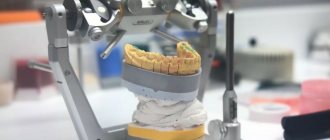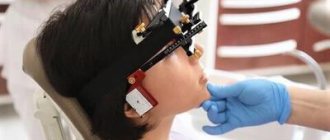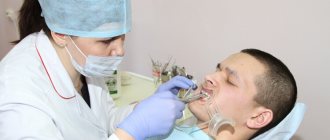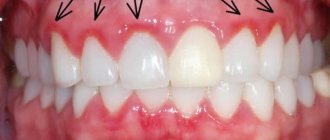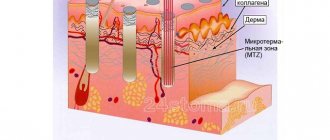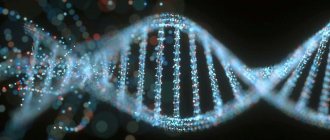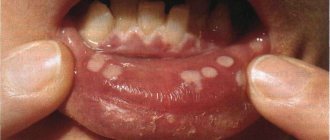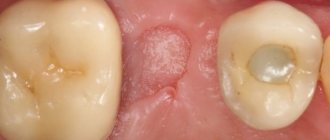- KtoNaNovenkogo
- FAQ
- Are you here
July 2, 2020
- What does an orthopedist do?
- What does this doctor treat?
- When do you urgently need to see an orthopedist?
- At a consultation with a doctor
- Detailed diagnostics
- Treatment methods in orthopedics
- How to prevent orthopedic problems
Hello, dear readers of the KtoNaNovenkogo.ru blog. Orthopedics is the most important branch of medicine.
Doctors who work in this area are directly related to traumatology, sports medicine and even dentistry.
Who is he, an orthopedic doctor? What does the doctor treat? Let's sort everything out "piece by piece"!
What does an orthopedist do?
The specialization of orthopedics in the general sense is very broad. Judge for yourself:
- Anti-inflammatory orthopedics – prevention and conservative treatment of diseases of the musculoskeletal system (patient care is provided in the clinic).
- Surgical orthopedics – surgical therapy, recognition and prevention of diseases of the musculoskeletal system.
- Endoprosthesis replacement is a surgical treatment in which the affected joint is removed and replaced with an artificial prosthesis.
- Traumatology and orthopedics – conservative and surgical treatment of mechanical injuries, burns, various deformations of the locomotor system, injuries in athletes.
- Pediatric orthopedics – treatment of congenital and acquired defects of the musculoskeletal system in children.
- Dental orthopedics – dental prosthetics and implantation, cooperation with an orthodontist and a dental surgeon.
When do children need an orthopedist?
The difficulties of pediatric orthopedics lie in the fact that it is not always possible to determine pathology at birth by eye. Therefore, timely contact with a specialist when parents or pediatricians identify congenital or acquired anomalies in a child allows one to avoid serious complications. And with age, loss of performance. The main indications for visiting a pediatric orthopedist include:
- Noticeable curvature of posture (kyphosis, lordosis, scoliosis).
- Signs of congenital hip dislocation in newborns.
- Heaviness of gait and rapid fatigue while walking.
- Foot deformity - varus or valgus.
- Complaints of discomfort, stiffness and aching pain in the lower back, neck, upper and lower extremities.
- Incorrect position of the head with a tilt towards the right or left shoulder (signs of torticollis).
What does an orthopedic doctor treat?
The list of diseases that an orthopedist has to deal with depends on his specialization. Let’s not be lazy and “talk” in more detail about each of them.
Traumatologist-orthopedist
An orthopedic traumatologist treats various wounds, burns, injuries and deformations of the musculoskeletal system. This profession emerged from two specialties that study diseases of the locomotor system - orthopedics and traumatology.
The doctor’s task is to return the patient to a full life without pain. For example, a person breaks his arm, the doctor examines the wound and orders an x-ray. At the finish line, the doctor corrects the fracture and applies a plaster cast or performs surgery (if everything is serious).
How to distinguish between a traumatologist, an orthopedist and an orthopedic traumatologist?
The difference between doctors lies in the diseases they supervise and the possibilities of diagnosis and treatment.
To make the information easier to understand, I will provide a comparison table:
| Problems/manipulations | Traumatologist | Orthopedist | Traumatologist-Orthopedist |
| Bone fracture | + | — | + |
| Reduction of dislocation (if surgery is not needed) | + | — | — |
| Plaster application | + | — | + |
| Joint puncture | — | + | + |
| Dystrophic changes | — | + | + |
From the table we can conclude: orthopedic traumatologist is a generalized term, since the doctor treats any changes in the bones and joints (except cancer).
Arthrologist
An arthrologist diagnoses and treats inflammatory, periarticular and articular pathologies, and helps the patient rehabilitate after the course.
The reasons for making an appointment with a doctor will be:
- lesions of the knee joint (observed in recent infectious diseases (flu, intestinal infection, etc.));
- pain in the joint (in the absence of injury);
- unnatural outlines of the joint (swelling is visualized, the skin around it looks darkened, hot to the touch);
- the joint hurts for a long time even when there is no load on it;
- mobility of some parts of the body is difficult (it takes time to restore it);
- against the background of joint pain, the patient's body temperature increased.
A referral to see an arthrologist is given by a general practitioner.
Orthopedic dentist
An orthopedic dentist deals with tooth restoration (if the tooth root is healthy) and prosthetics (if there is no tooth at all).
Thanks to the work of this doctor, it is possible to restore the aesthetics of a smile and the functionality of the dentition in a short time.
Orthopedic surgeon
An orthopedic surgeon deals with surgical treatment, recognition and prevention of diseases of the locomotor system, and also deals with prosthetics.
What diseases does an orthopedic surgeon treat?
His specialties include:
- scoliosis;
- osteochondrosis;
- flat feet;
- muscle tears;
- oncology;
- sprains and other injuries.
Attention! Bone and muscle pathologies develop over a long period of time and have specific symptoms, so it is very important to detect the disease at an early stage.
Pediatric orthopedist
A pediatric orthopedist is a doctor who diagnoses and treats pathologies associated with the musculoskeletal system of children.
For the first time, the child is brought to the orthopedist after 1 month . The doctor examines the color and cleanliness of the baby’s skin, assesses the proportionality of the physique, determines the shape and location of the head, the symmetry of the arms and legs at rest.
A manual examination by an orthopedist involves palpating joints and bone formations accessible for palpation.
The next examination of the child by an orthopedist is at 3 months. The third - at 6 months. At this time, the doctor checks whether there are any problems in the metabolic processes in the child’s body and determines the baby’s readiness to sit independently.
Experts also advise visiting a doctor at 1 year of age – while learning to walk.
The first reasons to contact a pediatric doctor on an unscheduled basis:
- clubfoot;
- different lengths of legs in children under one year old;
- asymmetrical folds on the skin;
- stooping, change in gait, back pain;
- fatigue when walking;
- congenital pathologies of the musculoskeletal system.
Take note! To prevent diseases of the musculoskeletal system in children, doctors advise not to neglect morning exercises, lead an active lifestyle and visit doctors in a timely manner.
Orthopedic diseases
A pathological process in the organs of the musculoskeletal system can affect any person, regardless of his age and gender. Some people “get” the disease by inheritance, others “acquire” it on their own due to poor nutrition, excess weight, excessive sports activity and failure to comply with other rules. If you feel some kind of alarm bell from your body, then do not be too lazy to undergo an examination by an orthopedist to rule out serious pathology. Otherwise, you will not notice how you will allow the development of one of these orthopedic diseases:
- Hernia;
- Osteochondrosis;
- Flat feet;
- Osteoporosis;
- Congenital clubfoot;
- Heel spur (spur on the heel);
- Coxarthrosis;
- Myositis;
- Bursitis;
- Torticollis;
- Hollow foot;
- Radiculitis;
- Hip dysplasia;
- Synovitis;
- Spondyloarthrosis;
- Valgus deformity;
- Scoliosis;
- Arthritis;
- Kyphosis;
- Periarthritis.
Detailed diagnostics
As part of additional diagnostics, the patient may undergo :
- X-ray. The procedure helps to quickly assess the condition of the skeletal system - diagnose arthrosis, osteochondrosis, and determine the stage of the disease. The session allows for differentiated diagnosis of pathologies that have similar symptoms. The patient does not have to prepare for diagnosis;
- ultrasonography. The procedure is aimed at diagnosing damaged tendons and joints, has no restrictions, and is carried out without preparatory measures;
- magnetic resonance imaging or CT. The most informative diagnostic methods that allow you to give a detailed assessment of the clinical situation (determine the condition of both bones and soft tissues).
When identifying osteoporosis, the doctor can also use biochemical diagnostic methods and conduct a biopsy examination. If necessary, the orthopedist consults with specialized specialists, for example, a neurologist or arthrologist.
In some cases, to identify specialized diseases, a specialist has to refer the patient for several tests :
- general urine and blood tests;
- blood test for clotting.
The doctor may also need data on activated partial thromboplastin time, prothrombin index, prothrombin and prothrombin time and fibrinogen.
Attention! If an operation is planned, the patient is prescribed all laboratory tests that are on the list of mandatory preoperative tests - immunological, serological, analysis for determining Rh and blood group, biochemistry, extended coagulogram, etc.).
What is your first appointment with an orthopedist like?
Initial consultation includes the main stages.
- Getting to know the patient, studying his outpatient card, assessing complaints and general condition.
- Visual inspection and assessment of movements of large and small joints, as well as the spinal column along its entire length.
- Detection of anomalies and deformations of the musculoskeletal system.
- Drawing up a plan for further examination, as well as making a preliminary diagnosis.
For a follow-up appointment with a doctor, patients come with the finished results of instrumental examinations (images, laboratory tests). Based on diagnostic data, as well as information obtained as a result of a repeated examination, the doctor makes a final diagnosis and forms a comprehensive treatment plan.
A doctor examines a patient who has previously undergone surgery on structures of the musculoskeletal system. Evaluates the effectiveness of the operation, the presence of contractures, instability and draws up an individual rehabilitation plan. There is a separate schedule of visits to the orthopedist in the postoperative period, which allows you to monitor the patient’s general condition over time.
Treatment methods in orthopedics
To rid a patient of a diagnosed illness, an orthopedist of a certain specialization may use conservative therapy or surgery .
- In the first case, the success of treatment largely depends on the patient himself; therapy is long-term. To ensure immobility of the damaged joint, plaster casts are used. For diseases of the lower extremities, orthopedic shoes and insoles are often recommended. Therapeutic gymnastics, physiotherapeutic procedures, and massage are widely used.
- Surgical treatment helps in cases where conservative methods are powerless. During the operation, the doctor implants prostheses, stitches muscle tissue and ligaments. In modern orthopedics, innovative techniques are used to replace a joint - an extremely complex operation with minimal risk of complications.
Responsibilities of an orthopedist
The main responsibilities of an orthopedist are:
- Reception and management of outpatients.
- Work in the emergency room and emergency care.
- Examination of patients at home if the patient cannot move or the movement is life-threatening.
- Performing operations and patient rehabilitation.
- Carrying out arthroscopy and intra-articular injections.
- Selection of endoprostheses, metal structures, orthopedic corsets, shoes.
- Participation in the medical rehabilitation commission, conducting examinations.
- Preparation of medical documentation and sick leave.
Acquired skills and abilities
Most of the residency is spent on practical training. An orthopedic traumatologist works not only with his head, but also with his hands, and without good skills, independent medical work is impossible. During practical classes, the following skills and abilities are formed:
- Diagnosis, conservative and surgical treatment of bone and joint injuries.
- Manual reposition of bone fragments.
- Carrying out skeletal traction.
- Applying splints to damaged areas of the body.
- Diagnosis and treatment of complications of peripheral nerve damage.
- Diagnosis and methods of treatment of dysplastic diseases of the skeleton.
- Diagnosis of damage to blood vessels, arteries, veins.
- Suture on the main and peripheral vessels.
Suture on damaged nerves, suturing the nerve end to end and end to side.- Autoneuroplasty.
- Transplantation of skin and muscle flaps.
- Transplantation of fingers and toes.
- Ultrasound diagnosis of injuries and diseases of the musculoskeletal system.
- Ultrasound of vessels, nerves, muscles and tendons.
- Diagnosis of soft tissue tumors.
- Ultrasound diagnosis of damage to articular cartilage, joint capsule, joint ligaments, menisci.
- Ultrasound diagnosis of bone injuries and diseases.
